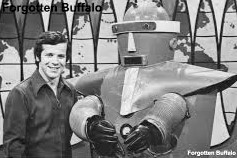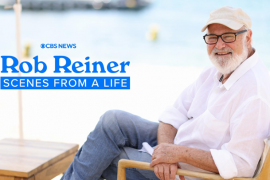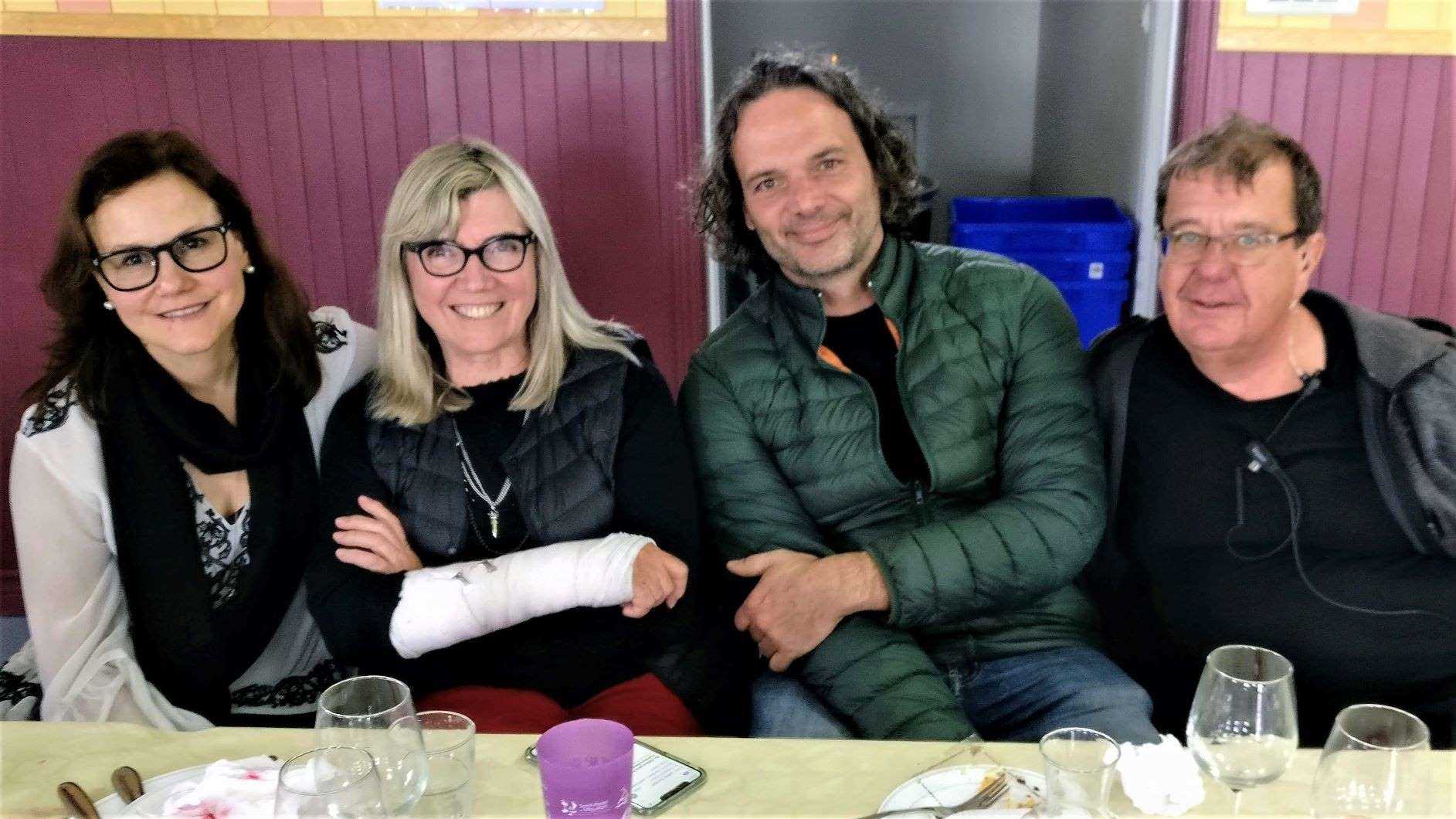
Tuesday night, France is going to the dogs.
Dog, that is — Rex from Hudson & Rex — as the St. John’s-based, canine detective series travels off shore and into the Gulf of St. Lawrence to the French territory of the islands of Saint Pierre and Miquelon. Citytv airs the fall finale Tuesday at 8 p.m.
I was lucky enough to accompany the cast and crew as the series spent a full day shooting in this petite slice of France 25 kilometers from the shores of Newfoundland.
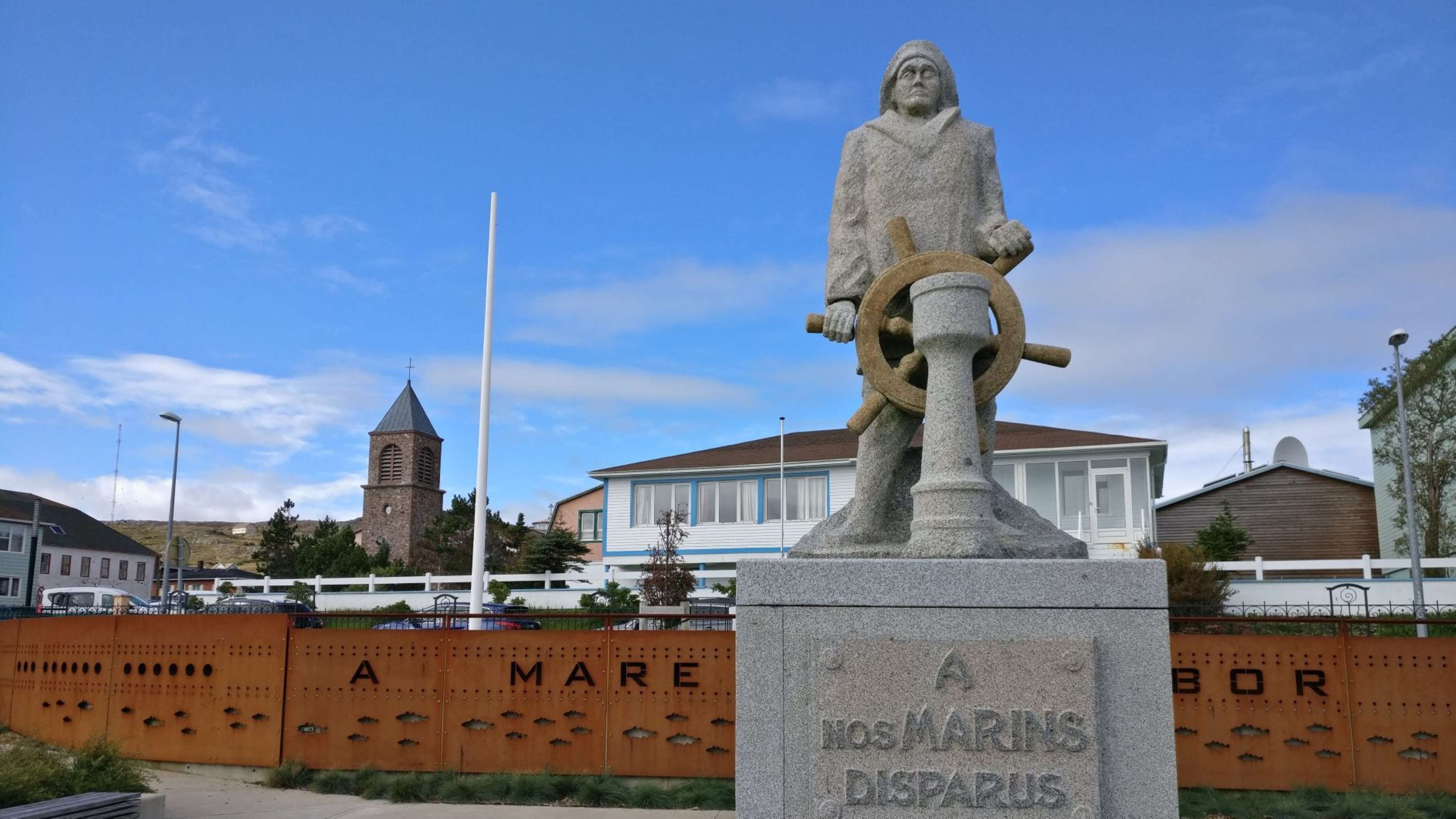
You need a passport to get there from Canada, and Euros are the currency, not Canadian dollars. The population on the two main islands sits at around six thousand. About a thousand are rotated in straight from France every year, so the bread is tres bien. The language spoken is more Parisian than Quebecois.
Crew members set up fake European speed limit signs, pegging the road rate at 30 km/hr. Said the gendarmes later, “Laisse-le” [Leave it].
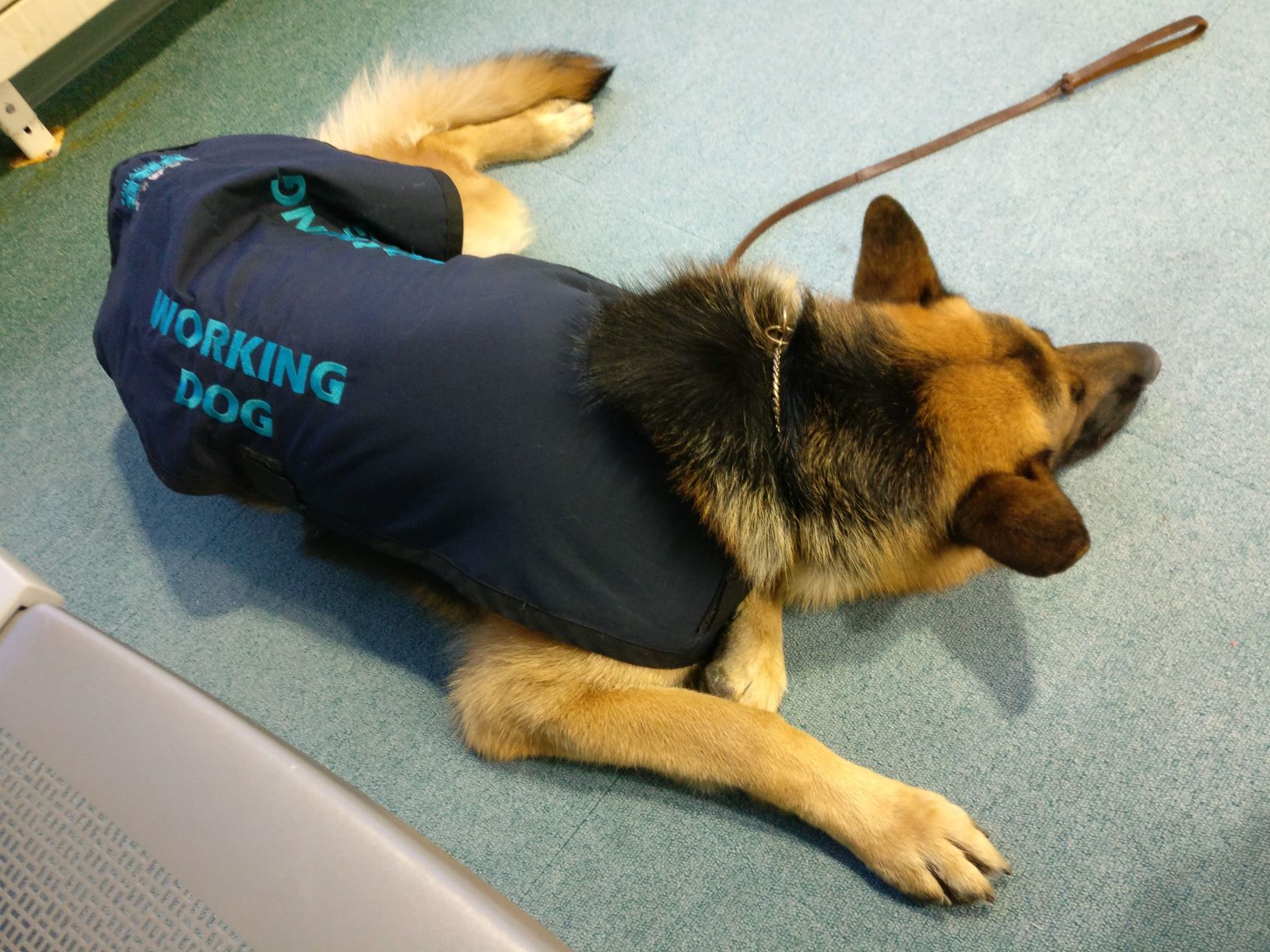
The population soared to about six thousand and thirty and two dogs on the day we visited last September 17. The two dogs were Diesel, the German Shepherd who plays the four-legged lead on Hudson & Rex, and Diesel’s cousin and stunt double Iko. Both travel with their trainer Sherri Davis and both wear blue blankets with the words “Working Dog” on them when they fly.
advertisement
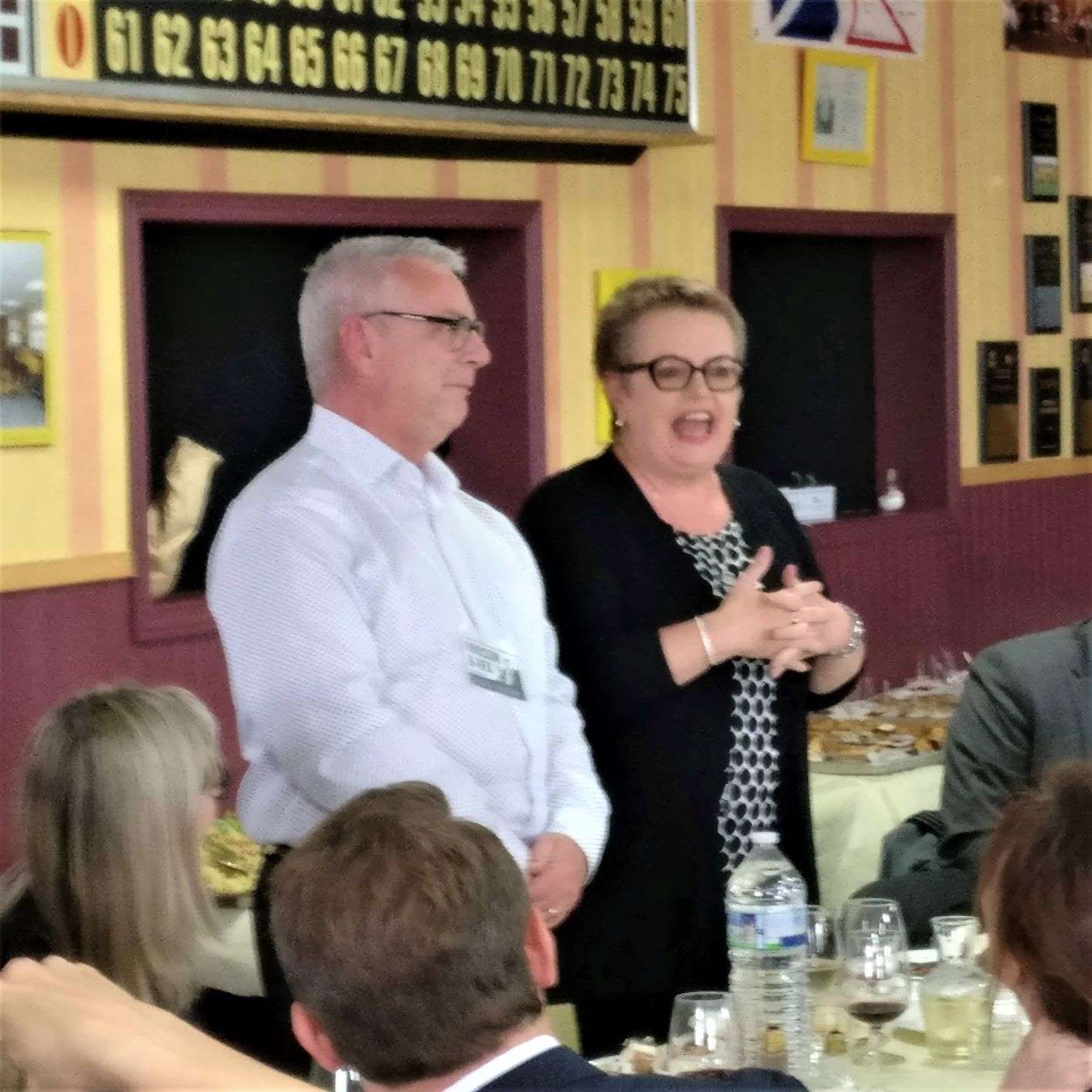
Our host was Paul Pope, the colourful executive producer of the series, who invited his pal the mayor of St. John’s, His Worship Danny Breen, along for the ride. I hung around mainly with Mr. Breen, and I tell ya, he has my vote. He loves the series because it shows a more modern, cosmopolitan side of St. John’s than the more tourist-y vistas viewed a few seasons back on Republic of Doyle.
Also in on the caper were Shaftesbury CEO and recent Order of Canada honouree Christina Jennings, Rogers Communications Director of Originals Nataline Rodrigues and writer/producer Derek Schreyer. Guest stars Aaron Ashmore and French actress Carole Bianic were also on the scene.
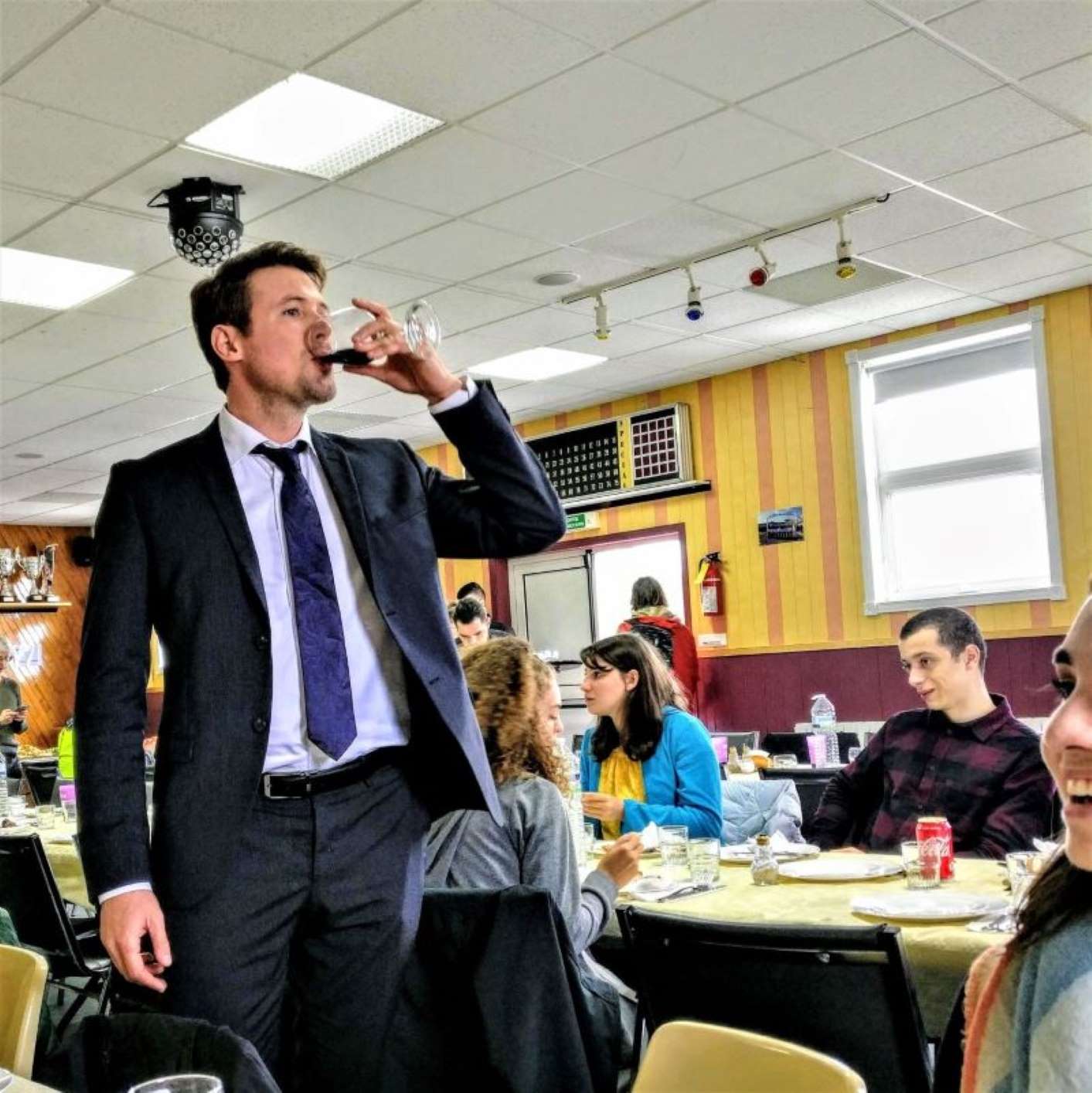
All gathered along with the cast and crew at the Saint Pierre Legion Hall where a VIP reception was attended by a representative of the French government. Pope boasted that real French cuisine and pastries would be served along with some wine, all a cut above the usual craft services grub.
Afterwards, as director John Vatcher sped through a packed day of shooting, I had a chance to grab a little interview time with Mr. Pope. It’s fun to hang around a set with the guy in charge who is about my age and as into it as anybody else on the set. Among the things I learned was that the movie Pope saw way back when that helped inspire him to be a TV series and movie maker was “Shane,” the landmark ’50s western starring Alan Ladd as a world weary gunfighter with one last lesson in him for an impressionable kid.
We’re only here for one day and it is raining off and on. What’s your backup plan should the weather get worse?
Here’s my saying. You do not need a plan for success; it will just happen. I always imagine my plans for success will not succeed.
Okay, but what if…
I knew I’d have options when I scouted this [location]. We are collapsing two set ups into one right now. Basically you try to make sure that the load bearing plot points get most of the time — and fit in the shiny parts around it. We are ultimately storytellers. Story outweighs everything. Given the choice tell the story. we’re going to get our shiny bits but that means we’ll be here until dark.
Is part of the thinking coming here to Saint Pierre to broaden the landscape for international sales?
Yes, we are releasing in France very soon. We’re in Italy now in prime time. Coming here is definitely part of the promotion of that.
Cops and dogs are endlessly exportable, right?
This is old fashioned storytelling. Thus is a show that in a way, you can watch with your family. It’s not dark, it’s not sinister, there’s never going to be a brutal murder—it’s kind of fun storytelling with a dog. The shock for me is just how much attraction the dog brings to it. I knew from the history of the franchise that it’s always been popular but that’s been the real eye opener. I’ve made all kinds of shows in my life, but now I have family members say to me, “Oh, you’re finally making something I can watch.”
How has the city of St. John’s taken to the series?
We all want to work on something people like. So it’s great, the crew the cast the writers, everybody, they feel that. Our locations people. when we first started at the police station, at the university, we were an imposition. After the show started airing, it’s their police station. They’re proud of it, they help us out a ton.
How did you get into the film business?
It goes back to my grade three teacher Mrs Brown. She had this story about photography solving a lost case. I just got interested in it. I went through the whole photography thing. A long time ago in Newfoundland, I told my parents I wanted to go to Ryerson and study film and photography, which I did in 1976 till ’80.
When I came back, film club was just starting. It’s been a very great place to live and work. I live here by choice. There’s no court order.
What was that like — moving to Toronto?
I had a great time at Ryerson. I was 17 years old. I went to the St. Lawrence Market and saw shit I’d never seen before. Peppers and vegetables. Then there was the quality of the instructors. It was just a real eye opener. Valuable period in my early life.
What was the first thing you produced?
The first thing truly mine at a professional level was the 1988 movie “Undertow.” Bit off way more than I could chew. My first CBC acquisition. We went to CBC Toronto and had a meeting with the guy in charge at the time. I was wearing contact lenses; it was my first network meeting. He grilled us and my eyes dried up. I went to the washroom, threw my lenses away, washed my face, did the last half of the meeting and could not see a thing. He says. “This is wrong, this is wrong…” Best workshop ever.
We went back that night and re-did the budget based on his notes. Called him and got a second meeting, He gave us the money. It was the beginning of a very long relationship for me and the CBC.
it was just a different level of intensity back then. In 1990 I did my first feature, “Secret Nation.” Paul Gratton at The Movie Network backed us up. I did seven or eight more movies for him over the next 25 years.
We knew so little back then. We wrote away to the unions and got their collective agreements and job descriptions. Then we went back and asked out friends: Who wants to be a grip? Who wants to be a gaffer? We divided people up according to the union descriptions—that was how we built the first group. These were people in the indy film scene.
People used to describe us as pot smoking hippies on welfare.





